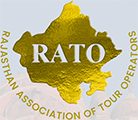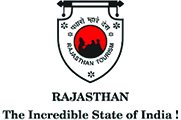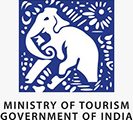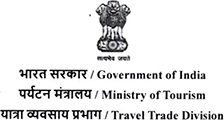Rajasthan Desert Tour
If you’ve always dreamed of experiencing the vast, mesmerizing desert landscapes of Rajasthan, then the Rajasthan Desert Tour for 8 Days is just what you need. This tour will take you on an unforgettable journey through the heart of Rajasthan’s desert region, where you’ll explore the ancient forts, majestic palaces, and golden sand dunes that define the desert’s beauty. Imagine riding a camel through the endless sands, watching the sun set over the dunes, and discovering hidden gems in cities like Jaisalmer and Bikaner.
Rajasthan Desert Tour Packages for 7 Nights and 8 Days
Our Rajasthan Desert Tour Packages are carefully crafted to give you the perfect blend of adventure and culture. Over 7 nights and 8 days, you’ll experience the rich history of Rajasthan, with visits to the stunning fortresses, temples, and havelis that have stood the test of time. Whether you’re a nature lover, history buff, or adventure seeker, this Rajasthan Desert Tour 7 Nights 8 Days will leave you with memories you’ll cherish forever.
Cities You Can Visit with Rajasthan Desert Tour
- Jaipur
- Bikaner
- Jaisalmer
- Jodhpur
- Ajmer/ Pushkar
Upon arrival, you will be warmly welcomed by our representative at the airport or railway station. They will assist you with your transfer to the hotel for check-in, marking the beginning of your unforgettable Rajasthan Desert Tour.
After breakfast, we will set out for a tour of the Amer Fort, located about 12 km from Jaipur. It was the ancient capital of the Kachwaha Rajput rulers. This unique wonder is a must-visit for every tourist in Rajasthan. The construction of the fort-palace was started in 1592 by Maharaja Man Singh, a Rajput commander in Akbar’s army. It was later expanded by Jai Singh before moving his capital to Jaipur. The fort is a stunning example of Rajput architecture, located on a hill and overlooking a lake. You will enjoy a ride up to the palace on the back of a brightly decorated elephant. We will visit the many chambers and hallways of this palace which are famous for their design and decoration. In the afternoon, we proceed for a tour of the city’s iconic structures. First comes Jantar Mantar, a magnificent stone observatory, built in 1728 by Raja Jai Singh, who was known for his passion for astronomy. The Jaipur Observatory is the largest and best-preserved of the five observatories built by him, the other four being in Delhi, Varanasi, Ujjain and Mathura.
We then visit the magnificent City Palace, the former royal residence built in a blend of Rajasthani and Mughal styles. The palace houses splendid museums displaying an excellent collection of miniature paintings, traditional costumes and armoury.
Later, we pass by the fascinating Hawa Mahal (Palace of the Winds), one of the major landmarks of Jaipur. Built in 1799, this five-storey building is a wonderful example of Rajput artistry. It was originally built to enable the women of the royal household to observe the everyday life and processions of the city.
After breakfast, we drive to Bikaner and check into the hotel. The city of Bikaner was founded by Rao Bika in 1488. He was the eldest son of Maharaja Rao Jodha (of the Rathore Clan), who founded the Jodhpur Kingdom. Not wanting to inherit anything from his father or take any royal title, he decided to found his own kingdom in the vast and arid region of Jangladesh in northern Rajasthan. The founder’s name ‘Bika’ is found in the word ‘Bikaner’, which means ‘Bika’s Settlement’. Despite being located in the middle of the Thar Desert, Bikaner survived as an important stopover on the ancient trade routes between coastal Gujarat and Central Asia, due to its abundant water resources.
The most important sights to see in the city today are, of course, the magnificent original Bikaner fort, Junagarh Fort (a little outside the city), and the Lalgarh Palace. Bikaner is also a good place to visit the nearby “Karni Mata Temple”, where thousands of sacred rats are worshipped.
We start the day’s sightseeing by first visiting the Junagarh Fort, also known as the ‘Impregnable Fort’, as it holds the distinction of being the most impregnable fort in its history. It was built between 1588-1593 by Raja Rai Singh, who was the chief of the army of the Mughal Emperor, Akbar.
It is surrounded by a moat on all sides and within its precincts you can admire many beautiful palatial structures, pavilions and temples. Most of these buildings are built of marble or red sandstone and feature intricate carvings on the walls, windows and balconies.
The ‘Lalgarh Palace’ was built by Maharaja Ganga Singh (1881-1942). The architectural style of this palace is a masterpiece of art with intricate carvings on red stone. It also houses a fine collection of hunting trophies and rare photographs, which are well preserved and beautifully displayed.
After breakfast, we head towards Jaisalmer, located in the vast desert plains of western Rajasthan. On the way, we first stop at a camel farm, located just 8km outside the city of Bikaner.
The farm is the remnants of the ‘Camel Corps’ and ‘Regiment Camp’ that were established during the British era. It was established as the National Camel Research & Breeding Farm in 1984 and is one of its kind in the whole of Asia, where you can see an impressive population of over 250 different species of camels.
We also recommend a visit to the Camel Museum which will be very worthwhile. Here, you can shop for a variety of camel skins, hair and bones, all of which are very valuable. The ‘must try’ here is the ice cream made from camel milk, something that is not available anywhere else in the country!!
The second part of the day’s program is a visit to the unique and world-famous Karni Mata Temple, in the village of Deshnok, about 30km south of Bikaner.
The dedication of this temple is linked to an interesting story involving Karni Mata, the goddess Durga, and Yama, the God of Death in Hindu mythology.
This temple has the distinction of being the only one dedicated exclusively to rats. As soon as you enter the temple, you are in the company of a small group of black rats. You can easily find about 20,000 of them, at any given time, roaming around the premises. They are well-fed, protected and worshipped as sacred creatures. Keep an eye out for the rare and rare white rats, as they are considered auspicious if you see one.
Fortunately, but interestingly, their numbers seem to remain more or less the same (never more than the population) and unlike other places with high population density, which can quickly trigger diseases, such as the dreaded plague, this temple has never seen any outbreak of disease in its history, arrived in Jaisalmer to check in at the hotel.
Jaisalmer is a city in the Indian state of Rajasthan, about 575 km west of the state capital, Jaipur. It was founded in 1156 AD by the Bhatti Rajput ruler, Rawal Jaisal. The city stands on Mount Meru, a mountain range of yellow-brown sandstone and is surrounded by the beautiful old city of Jaisalmer.
‘Jaisalmer’ means ‘Hill Fort of Jaisal’. The fort complex contains a royal palace and several beautiful and impressive Jain temples. Many of the buildings and temples, both inside the walls and in the city below, are made of yellow sandstone, often intricately carved. The picturesque landscape exudes a magical and colorful atmosphere, with golden and purple hues, constantly playing with the sunlight. For this reason, Jaisalmer is also called the ‘Golden City’ of India.
The city of Jaisalmer is located in the heart of the Great Indian Thar Desert and has a population (including the Fort) of about 80,000. It is also the administrative headquarters of Jaisalmer District.
The jewels of Jaisalmer, which we will visit today, are the following three ‘havelis’:
The large mansions built by the merchants of Jaisalmer are known as ‘havelis’, and many of these buildings, carved from fine sandstone, are still in good condition.
Nathmal-ki-Haveli:
This 19th-century fort has a beautiful architecture, beautifully crafted with exquisite craftsmanship. The left and right wings of the building were designed by two brothers, and although they are very similar in design, they are not the same. The interior of this beautiful building is a place of remarkable and beautiful carvings. Incidentally, this late 19th century fort was also the residence of the ‘Prime Minister’ of the ancient Jaisalmer Kingdom.
Patwon-ki-Haveli:
This most elaborate and beautiful of Jaisalmer’s ‘havelis’ stands on a narrow lane. It was built between 1800 and 1860 by five Jain brothers who made their fortune in the gold and brocade trade. It has a grand entrance hall with carved pillars and some well-appointed rooms. One of the five-roomed mansions has beautiful paintings.
Salim Singh-ki-Haveli:
This fort (the oldest of the three) was built about 300 years ago and parts of it still exist. Salim Singh was the governor when Jaisalmer was the capital of the princely state and his palace has a large, beautiful dome (in the form of a ‘cupola’ and painted blue) with some carved brackets in the shape of a pin.
We will visit ‘Gadi Sagar’, located south of the city walls. This place was originally built as a boat and water reservoir, which used to be the main source of water for the city. There are many small temples and shrines around it. Various species of waterfowl flock here during the winter months.
In the late afternoon, and until early evening, we will visit ‘Sam Dunes’, located about 45 km west of Jaisalmer.
Here, you will watch the breathtaking sunset from the sand dunes. You also have the option of camel riding or a jeep ride to reach the sunset point which is not far away.
We have put together an evening program for you with captivating music, traditional dances and dances, and traditional and delicious food of this region along with other Rajasthani delicacies.
After breakfast, we drive to Jodhpur and upon arrival, we check into the hotel. Later, we will proceed for a sightseeing tour of Jodhpur, the second largest city in Rajasthan. It is also known as the “Blue City” of India. It was the traditional capital of the great Marwar kingdom and especially the Jodhpur kingdom. It was founded by Rao Jodha in 1459. Jodhpur is located near the regional center or heart of Rajasthan and this makes it a convenient and central point for travel to other tourist destinations such as Udaipur, Jaisalmer, Bikaner, and Jaipur.
After breakfast, we first left for Pushkar and on the way stopped at Ajmer, which is located just 11 km from the Pushkar town.
Ajmer, an emerging city on the banks of the Anantapur has always been a city of strategic and historical importance, right from the time of Mohammed Ghori, who plundered it at least once in his periodic and plundering expeditions from Afghanistan. Much later, and from the time of Mughal emperor Humayun, it became the favourite residence of the mighty Mughals.
It should be noted that the first contact between the Mughals and the British took place in Ajmer, when the English envoy Sir Thomas Roe met Emperor Jahangir here in 1616.
Today, Ajmer is a world-famous pilgrimage center for Muslims (as well as people of other religious faiths) who visit the holy shrine of Sufi saint Moinuddin Chishti, who came to Ajmer from Persia in 1192 AD. He is also known as ‘Hazrat Khawaja Garib-e-Nawaz’, abbreviated to ‘HKGN’, which is often found inscribed on transport vehicles owned by Muslims.
This ‘dargah’ (=mausoleum) has the distinction of being the most visited Muslim shrine in the entire world and it is recorded that the mighty emperor Akbar used to make a pilgrimage to this place every year during the annual ‘Urs’ held to mark the anniversary of the saint’s death.
Pushkar:
Pushkar, a charming little town, is situated on the edge of the desert and is separated from Ajmer by the ‘Nag Pahad’ or ‘Snake Mountain’.
The town is perhaps best known for its annual Camel Fair, a massive gathering of camels, cattle and livestock that takes place on the full moon night of the ‘Kartik’ month of the Hindu calendar.
Another highlight of the town is the ‘Brahma Temple’, believed to be one of the only temples in the world dedicated to ‘Brahma’, the creator and Lord of the universe.
It is marked by a red spire, and above the entrance, is a ‘Hamsa’ (= a swan, the symbol of Brahma), who is said to have personally chosen Pushkar as its site and location.
After breakfast we will leave for Jaipur, at the end of this trip, we will reach Jaipur Airport/Railway Station and catch your flight back home. We sincerely thank you for availing our services and we hope you will be satisfied with our commitment to provide the best care and attention to our esteemed guests. We would like to believe that this trip was a wonderful vacation and we are sure you will take with you memorable memories for a lifetime.
Need Help ?? Contact us..!!
Mail Us
info@rajasthantourismbureau.com
Call Us
+91-9928026027 / +91-141-6783026
For details or any other query please contact below :
How It Works
- Choose from our curated tour packages designed around diverse interests and destinations, or create a custom travel itinerary for a journey that's uniquely yours.
- Once we receive your email, you can expect a prompt response within 24 hours, complete with a detailed itinerary tailored to your preferences and needs.
- Enjoy the convenience of secure online payment, or choose to pay upon arrival—whichever option best fits your preferences and travel plans.
- 5000+ Completed Tours with happy Clients
- 25+ Years of experience
- Globally Recognized As best Tour Operator





